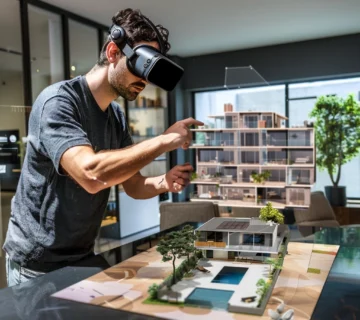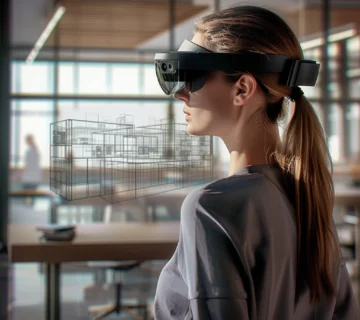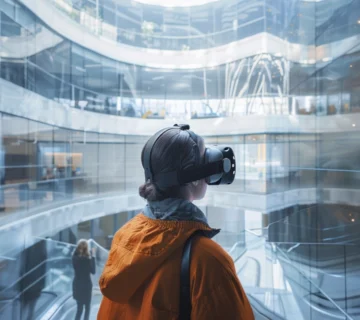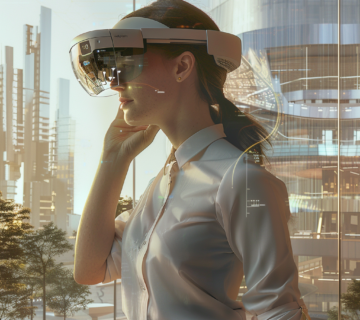Elevating Spaces: The Top 3 Most Amazing Interior Architecture in Recent Years
Introduction:
Interior architecture, the art of transforming the insides of our buildings into captivating, functional, and immersive architecture, continues to redefine the way we experience our surroundings. In 2023, designers and architects have taken interior architecture to new heights, pushing boundaries, and embracing cutting-edge concepts in architecture design. In this article, we’ll showcase the top five most amazing interior architectural designs of 2023 that have left us in awe.
1)The Metropolitan Museum of Art’s “The Met Unframed”
The Metropolitan Museum of Art in New York City unveiled “The Met Unframed,” a groundbreaking building architecture project that blends art and technology seamlessly. This immersive installation transports visitors into iconic paintings and sculptures through augmented reality. Interior architects worked on creating a stunning environment that seamlessly integrates the digital and physical worlds, providing an unparalleled experience for art lovers and enthusiasts alike.
Figure 1: The Met Unframed
2)Google’s “Silicon Valley Campus”
Google’s new Silicon Valley campus redefines the idea of a corporate office in its exterior architecture design. Interior architects designed a space that not only enhances productivity but also focuses on employee well-being and sustainability. With state-of-the-art workspaces, lush greenery, and an emphasis on eco-friendliness, the campus offers a glimpse into the future of workplace design, promoting collaboration, creativity, and environmental consciousness.
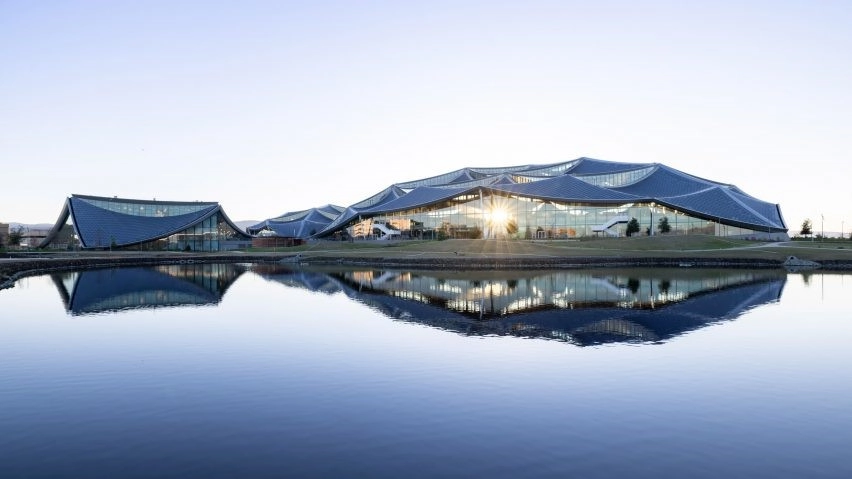
3)The Louvre Abu Dhabi’s “Floating Dome”
The Louvre Abu Dhabi’s “Floating Dome” is a futuristic architecture marvel that combines modernity with tradition. Designed as an intricate lattice structure, the dome creates a captivating interplay of light and shadow. Its innovative design lets in just the right amount of sunlight, providing a breathtaking ambiance within the museum.
“Louvre Abu Dhabi is surrounded by water, where visitors can arrive by land or sea. Just like wandering the narrow streets of an Arabian medina, visitors can explore the 55 buildings, of which 23 are galleries. They are architecturally inspired by the low-rise homes of the region.”[louvreabudhabi]
The interior architects behind this project have masterfully crafted a space that evokes a sense of wonder and serenity, setting a new standard for museum interiors.
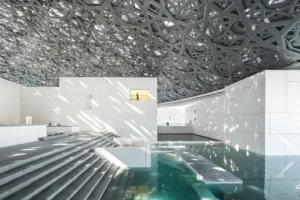
Mastering the Art of Interior Architecture: Designing Spaces that Inspire”
In the ever-evolving world of architecture, the role of interior architecture has taken center stage, redefining the way we perceive and interact with our built environments. From creating innovative and functional spaces to integrating sustainable and futuristic designs, interior architecture is an art that has the power to transform the way we live and work.
In this article, we’ll delve into the exciting world of interior architecture, exploring its nuances, trends, and its interconnectedness with other facets of the architectural realm. We’ll also touch upon essential LSI (Latent Semantic Indexing) keywords that add depth to our understanding of this field.

Understanding Interior Architecture
Interior Architecture, our primary focus keyword, encompasses the design and organization of interior spaces, optimizing their functionality, aesthetics, and overall ambiance. It’s all about the thoughtful manipulation of space and the fusion of form and function to create visually appealing and harmonious interiors.
Key Concepts in Interior Architecture
Architecture Design: Interior architecture goes hand in hand with broader architectural design principles. It involves the precise coordination of structural and design elements, ensuring that every detail complements the overall vision.
Modern Architecture: Contemporary interior architecture often draws inspiration from modern architectural trends. The clean lines, open spaces, and minimalistic designs commonly found in modern architecture have a significant influence on interior spaces.
Futuristic Architecture: Embracing the future is integral to interior architecture. Forward-thinking concepts and the integration of advanced technologies are essential to create spaces that are both visually stunning and functionally efficient.
Sustainable Architecture: Sustainability is a buzzword in today’s architectural landscape. Interior architecture is no exception, with sustainable materials and eco-friendly design practices becoming the norm, promoting a healthier planet.
Digital Architecture: In an increasingly digital world, interior architects often incorporate technology into their designs, creating spaces that are both aesthetically pleasing and technologically advanced.
The Confluence of Interior and Exterior Architecture
While interior architecture is a distinct field, it often collaborates with other facets of architecture. The harmonious integration of exterior architecture design with interior spaces is vital. This collaboration ensures that the transition from the outside to the inside is seamless, creating a holistic and visually engaging experience for the occupants.
Pushing Boundaries: Interactive and Immersive Architecture
As technology continues to advance, interior architects explore the realms of interactive architecture and immersive architecture. These emerging trends aim to create spaces that engage and captivate users on a deeper level, often employing interactive installations, virtual reality, and other cutting-edge technologies to create unique, immersive environments.
Conclusion :
Interior architecture is an art form that constantly evolves and adapts to our changing world. From embracing modern and futuristic design principles to integrating sustainability and technology, it continues to push the boundaries of what is possible within the built environment.
Two of the most crucial concepts interconnected with the visualization of futuristic architectural design are Interactive architecture and Immersive architecture. These concepts represent cutting-edge trends in architecture that have the power to transform the way we experience and interact with our built environments. These two pivotal concepts, interactive architecture, and immersive architecture will be thoroughly explored in our upcoming blog articles.
To excel in this field, architects and designers must be adaptable, innovative, and forward-thinking, while also appreciating the interconnectedness of interior architecture with the broader architectural landscape. By focusing on these key concepts and staying at the forefront of architectural trends, we can shape interior spaces that not only meet our practical needs but also inspire and elevate our quality of life.
The world of interior architecture in recent years has given birth to remarkable designs that inspire, captivate, and push the boundaries of what is possible within our built environments. These top five interior architectural designs represent the pinnacle of creativity, innovation, and sustainability. They not only transform spaces but also enhance the way we live, work, and experience art and nature. In the years to come, interior architecture will continue to shape our world in exciting and imaginative ways, creating spaces that are both functional and emotionally resonant.
At HUUR Studios, we understand the importance of interior architecture in creating spaces that leave a lasting impression. Our commitment to excellence in architecture design visualization and our passion for innovation ensure that your projects stand out as testaments to the art of interior architecture.




